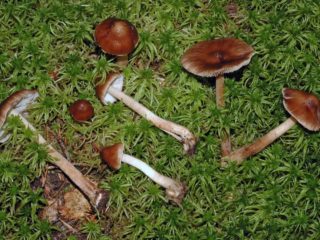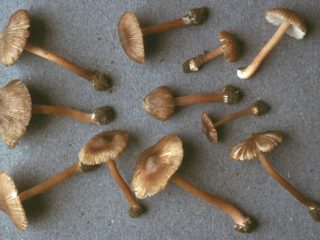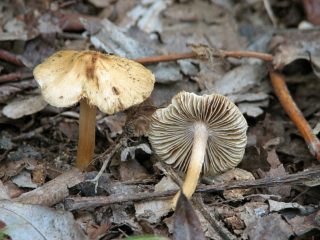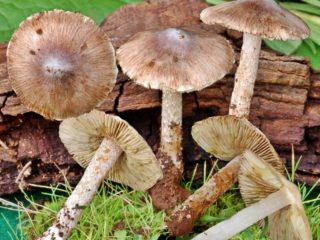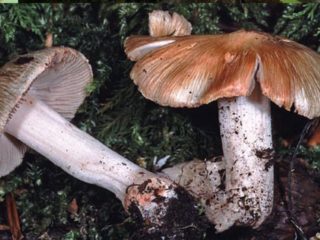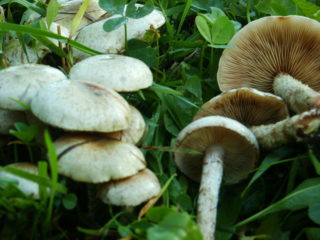Content
Earthen fiber is one of the many types of lamellar mushrooms that are part of the fiber family. Usually mushroom pickers do not pay attention to them, since they bear little resemblance to the well-known edible mushrooms. This is absolutely the correct approach, since the earthen fiber is a poisonous fungus, and its use in food can be deadly.
What does earthen fiber look like
Externally, the earthen fiberfish looks like a typical grebe. She has a conical bell-shaped cap with a characteristic bulge in the center, over time it straightens out and becomes like an umbrella with the edges lowered or slightly curved inward. Usually its size does not exceed 2-4 cm in diameter, although there are also larger specimens. The hat is white at a young age, eventually acquires a bluish-purple color with a pinkish tint, dark in the central part and lighter in the periphery. The saturation of color depends on the place of growth of the fungus and weather conditions; there are both intensely colored and almost white specimens.
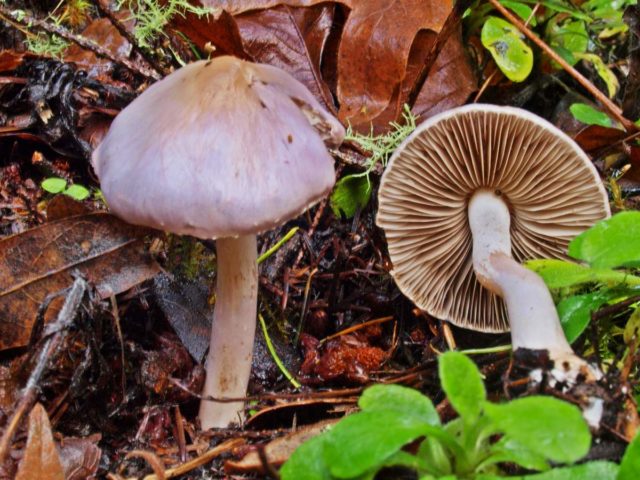
Earthen fiber - a dangerous poisonous mushroom
The earthen fiber cap is covered with a thin and pleasant-to-touch skin with a radial-fibrous structure. It becomes sticky and slippery when it rains. The edges of the cap often crack. On the reverse side there are numerous adherent plates. At a young age, they are white, later darken and turn brown or brown.
The stem of the fiber is earthen solid, cylindrical, usually slightly curved. It can grow up to 5 cm long and up to 0.5 cm in diameter. It has a longitudinally fibrous structure, dense to the touch, without an internal cavity, which can only form in old mushrooms. The stem is usually slightly thicker at the base. It is light, in old mushrooms it can turn brown, in the upper part there is a light bloom.
Earthen fiber pulp is white, brittle, its color on the cut does not change. It has an unpleasant taste and a mild earthy odor.
Where does the earthen fiber grow
Earthen fiber grows in the temperate forests of the European part of Russia, as well as in the Far East. It is found in North America, in the states of Western Europe, as well as in North Africa. Mushroom growth usually begins in mid-summer and ends in early October. Earthen fiber is often found in small groups in the grass, along the roads, often next to the pine tree, with which it forms mycorrhiza.
Is it possible to eat earthen fiber
It is impossible to eat earthen fiber. The pulp of this mushroom contains the same toxic substance as in the fly agaric - muscarine, while its concentration in the tissues of the mushroom is much higher. When it enters the human body, this poison affects the digestive organs and the central nervous system.
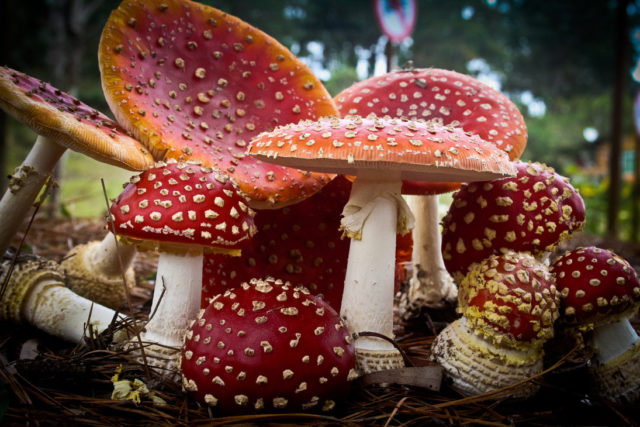
Earthen fiber contains more poisonous muscarine than the well-known fly agaric
In small doses, it causes indigestion and short-term mental changes, but with high concentration, collapse, coma and even death are possible.
A small video about one of the representatives of the Volokonnitsev family:
Poisoning symptoms
The unpleasant consequences of eating earthen fiber can be felt within 20-30 minutes from the moment the mushrooms enter the stomach. The symptoms of poisoning are the following factors:
- Sharp abdominal pain.
- Upset stomach, diarrhea, vomiting.
- Changes in heart rate, tachycardia.
- Increased salivation.
- Constriction of the pupils.
- Trembling limbs.
First aid for poisoning
If symptoms of fiber poisoning (and other mushrooms too) appear, you should immediately contact a medical institution or call a doctor. Before the ambulance arrives, it is necessary to rinse the victim's stomach in order to remove food debris containing toxins from the body. To do this, you must force him to drink a large amount of water, slightly colored with potassium permanganate, and then induce vomiting in him.

To reduce chills, it is better to wrap the victim
To reduce the absorption of toxins in the stomach tissue, the victim must take any absorbent. It can be, for example, activated carbon, the dose of which is calculated based on the weight of the victim (1 tablet per 10 kg). You can use other means of poisoning, such as Enterosgel or the like. The victim must lie down until the doctors arrive.
Conclusion
Earthen fiber is a dangerous poisonous fungus. She has no edible counterparts, so cases of poisoning her are relatively rare, and there are no reports of deaths. However, you should always be careful when picking mushrooms and never take questionable or unknown specimens.
